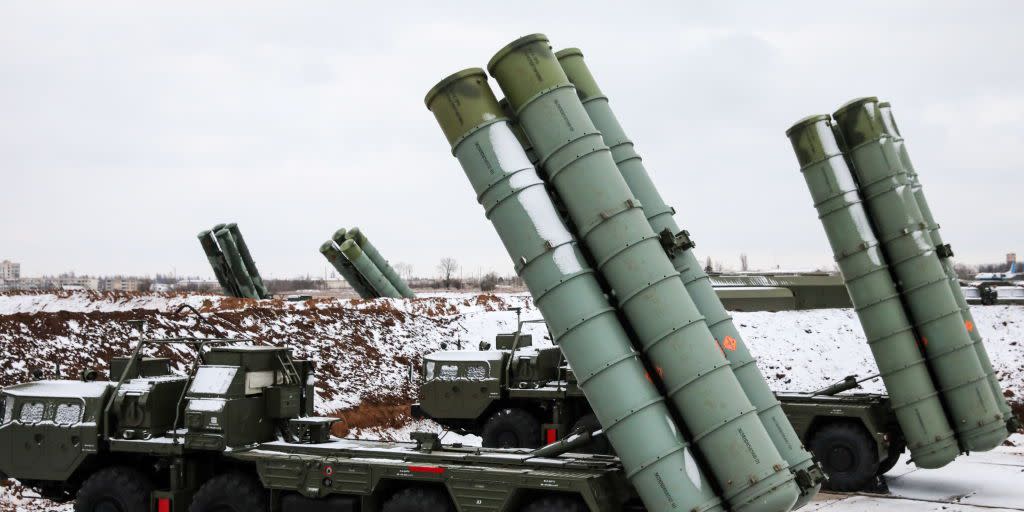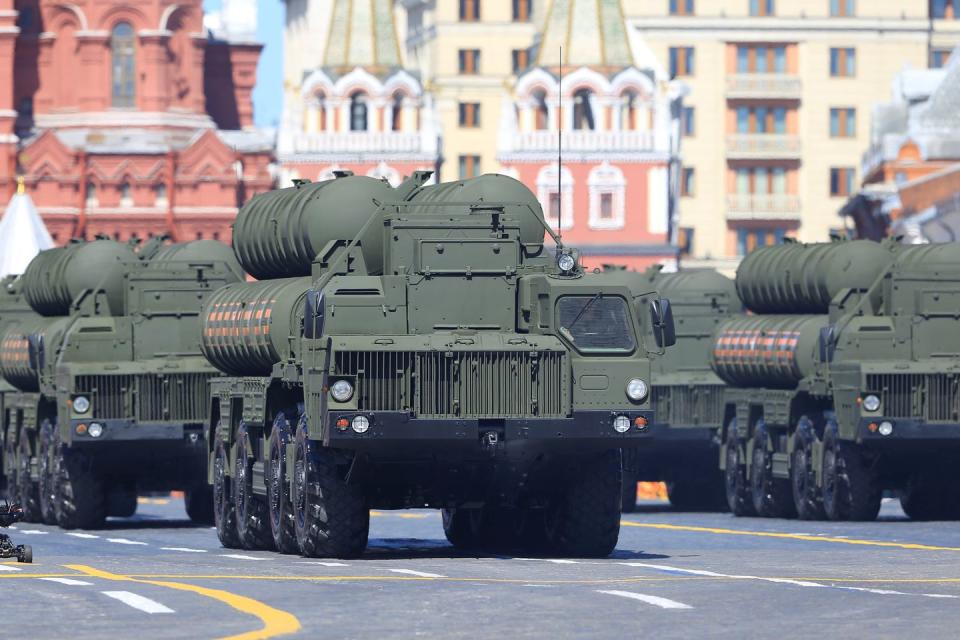A Storm Ruined an Entire Shipment of Russia's Best Missiles Bound for China

Even the world's great military powers sometimes open a delivery box only to find their merchandise broken.
China recently ordered a number of advanced surface-to-air missiles from Russia. But the boat was caught in a major storm that jostled the weapons in every which way. Upon arriving China, the shipment was too damaged to be used, so the deadly 40N6 missiles had to be returned to Russia and destroyed.
Aviation Week & Space Technology's Steve Trimble was in Abu Dhabi for the IDEX 2019 defense show when he asked Sergey Chemezov, CEO of Russian defense contractor Rostec, whether a recent shipment of S-400 surface-to-air missile systems to China would include the new 40N6 missile. Trimble got more detail than he bargained for when Chemezov admitted that all of the missiles in the shipment were lost.
For reference, here’s the transcript of my exchange with Rostec CEO Chemezov about the S-400 system delivered to China. I just wanted to confirm that the shipment included the 40N6 missile. pic.twitter.com/L4EgwMNjaU
- Steve Trimble (@TheDEWLine) February 18, 2019
The incident at sea was reported by Russian state media outlet TASS on January 19. That day, an article at Maritime Bulletin identified the ship as the Nikifor Begichev, which had departed from Ust-Luga in Leningrad province on December 30, bound for China. Ust-Luga was identified by state media as the port of departure for a previous S-400 shipment in early 2018. The Maritime Bulletin article states:
“During the night Jan 3 ran into storm and experienced trouble with bulky cargo on cargo deck. The ship was drifting for some time, and at around 0500 UTC Jan 3 turned back. The extent of damages sustained by ship is of course, unknown. She returned to Ust-Luga anchorage on Jan 9.”
According to a transcript of the press conference, Chemezov stated that the damaged missiles were “liquidated” and the defense contractor was manufacturing new ones.
The 40N6 missile is one of the most advanced in existence. It's used by the S-400 “Triumph” long range surface-to-air missile system, known to NATO as the SA-21 “Growler-A.” Like the American Patriot missile system, the S-400 uses different missiles to intercept different threats, and 40N6 is the newest missile developed for the system.
The 40N6 is meant to shoot down intelligence, surveillance, and airborne early warning and control aircraft, such as the E-3 AWACS used by the U.S. and NATO. It has an extraordinarily maximum range of 236 miles and a maximum engagement altitude of 98,450 feet. According to Russian state media, the missile can reach Mach 3.42, but a 2015 U.S. Army Strategic Studies Institute report lists its maximum speed at a blistering Mach 14.
The S-400 is an extremely dangerous missile system. Its radars are designed to be resistant to enemy jamming, and reportedly use rapid frequency-hopping and agile beam-steering. The system’s Nebo-M acquisition radar has some capability to detect stealth aircraft. The S-400 can engage up to 36 targets at once and also tie together other Russian air defense systems to coordinate an area’s air defense against low-flying aircraft, cruise missiles, and even ballistic missiles.

The new missile, which is built by defense contractor Almaz-Antey, entered service with Russian air defense forces in October 2018-three years later than expected. China ordered a batch of S-400 systems and missiles in November 2014, deliveries were completed in mid-2018, and a second round of firing tests in China were completed by January 2019. Previous missile shipments had included the 48N6E2, an older surface-to-air missile, but apparently this latest shipment was for the brand new 40N6.
The sale of S-400 systems to China in 2014 set off alarm bells throughout Asia, as the system’s missiles had the range to engage aircraft not only in the East China Sea (the site of ongoing Japanese-Chinese aerial confrontations) but also over the island of Taiwan. The island nation, which is viewed as a rogue province by the mainland government, has been the subject of repeated threats of invasion by Beijing. The S-400 could support an invasion or even theoretically institute an aerial blockade, shutting down commercial aircraft flights to and from the island.
('You Might Also Like',)

